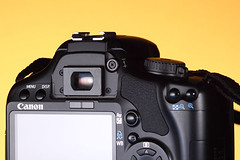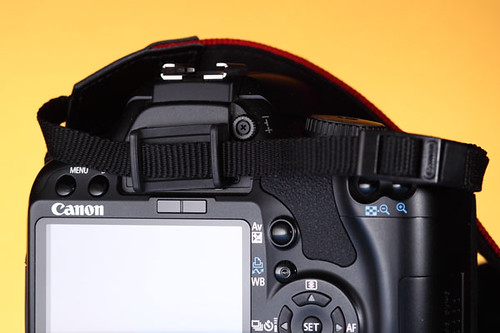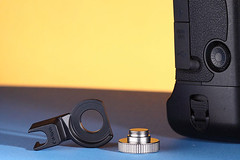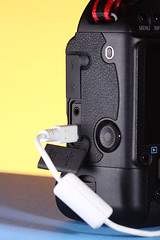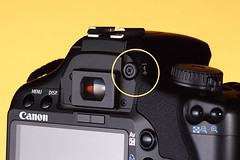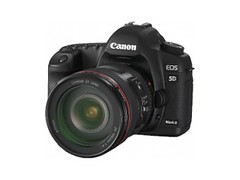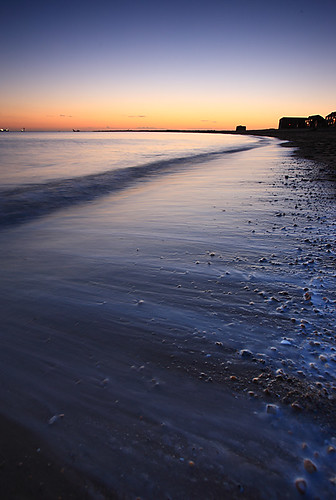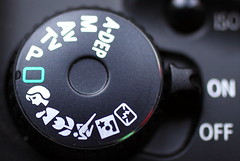
Moving the mode dial just one click round from
green square to Portrait (the head symbol) mode changes your pictures quite significantly.
In short the camera changes the main program to try and give you less depth of field so that your perfect portrait stands out from the background; out of focus background, sharp subject. It does this by opening the aperture more than the green square mode, which also helps you by increasing shutter speed and reducing camera shake and subject movement.
Second big change is to continuous shooting, you hold the shutter button down and the camera keeps on taking pictures until the buffer fills. The idea is that a portrait picture capture the fleeting expressions of people, continuous shooting gives you more chance to capture a good expression by taking more pictures. However the expectation of the Canon engineers is that people are stationary when you take their portrait so the AF mode is set to one shot. You get focus lock with one of the AF points and then all the rest of the sequence of pictures you take whilst mashing down the shutter button will be focussed at the same point. Get the focus wrong for the first shot and you get a set of nicely out of focus shots. Also if your target is hyper active children and pets then this is not the mode for you.
The camera will also select the AUTO ISO setting, but lock it to ISO 100 in daylight to give you the maximum noise free picture quality. When the flash is popped up then the ISO will be ISO 400 to help the little on board flash reach a bit further.
As the light levels drop you will find the camera will pop up the built in flash when needed and it does a good job to try and fill-in shadows on the face as long as the person in your portrait is around 3 meters away. 10 meters and you will run out of flash range. You can't manually pop-up the flash in this mode.
The next and most striking change to pictures is how the camera processes them. Skin tones are a little more subtle, dayglo clothing tends to look a bit muted as the camera selects portrait Picture Style [
much more to come on Picture Style in a future article]. This tries to give a good skin tone and softens the skin a little so that you don't get super sharp wrinkles on the models face; in camera botox lite!
As with many of these basic zone modes, selecting the appropriate mode gives the camera more information about what you want to acheive, the more you tell it what you want to acheive the better it can take photos to match your intentions.
Most digital EOS cameras have the portrait mode, though if you're using an EOS-1D or EOS 5D series model then you have to make all the settings yourself.
-blabpictures-
